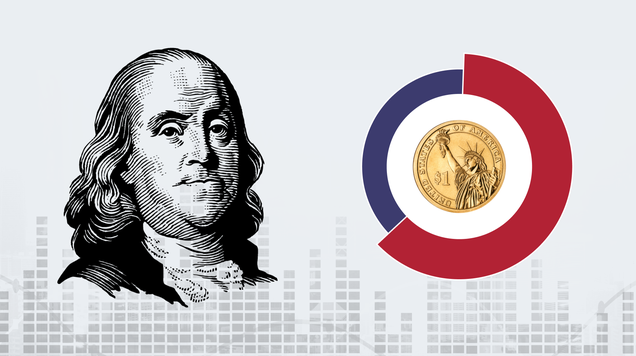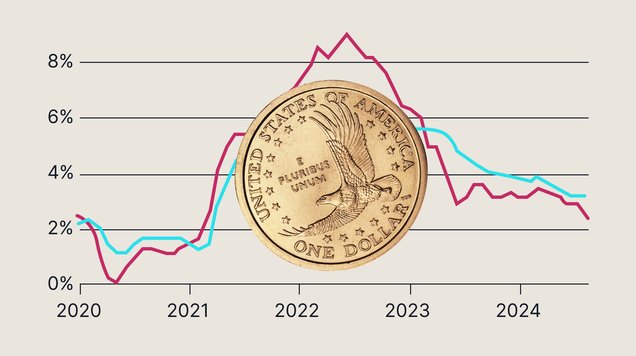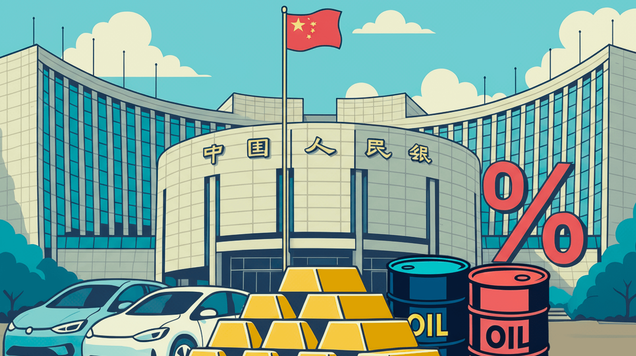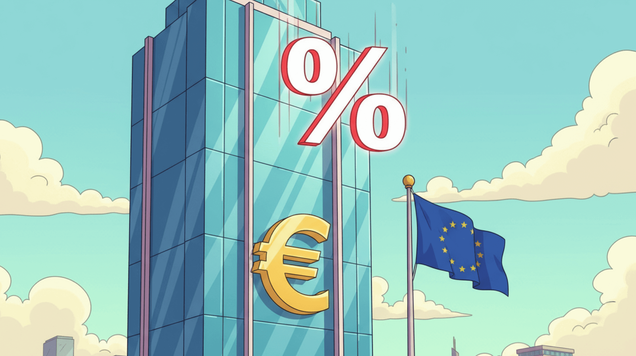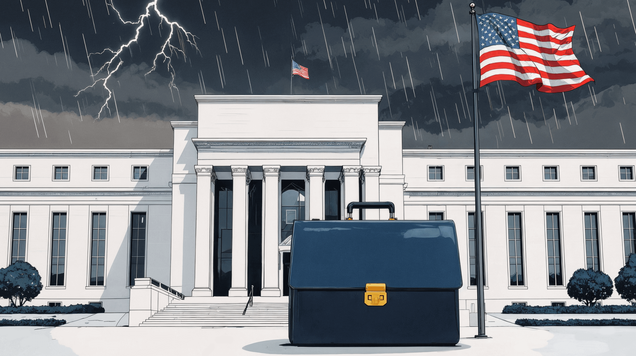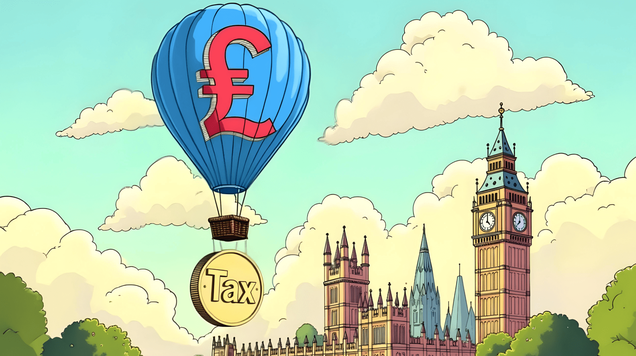UK outlook Q2 2025
UK is navigating tariffs, oil pressure and GBP strength amid fiscal changes

The FTSE 100 reversed early 2025 gains after Trump’s 10% tariffs on UK goods and a 12% oil price drop hit energy stocks, amplifying market stress amid trade war fears.
The British pound could benefit from tighter UK fiscal policy and the Bank of England’s high interest rates, attracting carry trade flows and reinforcing GBP strength in Q2.
While risks remain from a potential BOE rate cut in May, the UK’s moderate tariff exposure and diplomatic stance offer relative stability compared to the EU and China.
The FTSE 100 struggled in Q1 2025, erasing the 9.1% gains made in January and February, with the sharpest sell-off following Trump’s announcement of 10% tariffs on UK goods. This has pushed the index near correction territory, particularly affecting UK energy stocks. The 12% drop in Brent crude oil year-to-date, coupled with the global trade war, has heightened market uncertainty. As a result, energy stocks like BP, Shell and Tullow Oil have faced significant downside pressure.
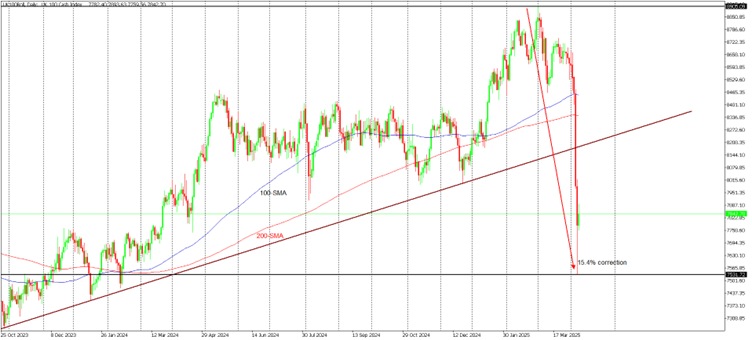
Figure 1: FTSE 100 Cash Index (UK100)
The trade war and tariff escalation are expected to reduce global growth forecasts, further dampening the oil demand outlook. Moreover, OPEC+’s decision to increase oil output by 411,000 bpd in May adds to concerns over excess supply, placing additional strain on UK energy stocks.
Great British pound positioned as potential winner in tariff trade war
UK Chancellor, Rachel Reeves, is set to introduce significant fiscal measures in October, including a £33 billion increase in employer social security contributions alongside anticipated tax hikes. These steps signal tighter fiscal policy, which could bolster the British pound (GBP) in the near term. With the Bank of England (BOE) maintaining interest rates at 4.50%, the highest among major peers, the GBP appears poised to strengthen against other currencies in Q2 2025, provided the BOE refrains from cutting rates in May.
The BOE’s cautious stance on monetary easing has distinguished it from other central banks, sustaining elevated interest rates that create a favourable environment for carry trades. Investors are capitalising on these interest rate differentials, borrowing in lower-yield currencies to invest in the pound. Supporting this trend, the UK 10-year GILT yield held steady at 4.6% during the first week of April 2025, reflecting market confidence in the UK’s economic posture.
The backdrop of US President Trump’s tariffs adds another layer. The UK faces a relatively modest 10% tariff, lower than the 20% EU tariff or 54% Chinese rate, easing some pressure on its export sectors. Prime Minister Keir Starmer has adopted a calm and pragmatic response, reserving the right to retaliate while prioritising diplomacy to mitigate tariff impacts. This restraint may shield the UK from the sharper economic fallout seen elsewhere, potentially enhancing the GBP’s relative appeal.
However, risks remain. A BOE rate cut in May could trigger short-term downward pressure on the pound, undermining its strength. Despite such a shift, the combination of high interest rates, fiscal tightening and a manageable tariff burden positions the GBP as a potential outperformer against peer currencies in Q2 2025.
